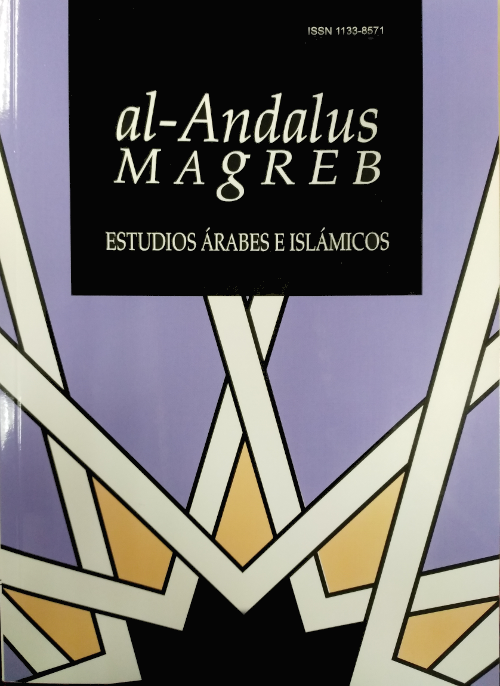Nueva contribución al conocimiento del registro material emiral desde una capital administrativa andalusí: kūrat Bāguh. ["New contribution to the knowledge of the Emirate material record from an Andalusian administrative capital: kūrat Bāguh"]

Información
Resumen
La excavación de la unidad sedimentaria que amortizaba parte del foso emiral del solar del Barrio de la Villa, calle Real, 15, en Priego de Córdoba ha permitido recuperar un interesante material cerámico encuadrado entre los siglos VIII y IX d.C. Dicha muestra contribuye en general al conocimiento del registro material emiral en al-Andalus y en particular al escaso repertorio arqueológico que para época tan temprana existe en el casco urbano de una medina que va a llegar a ser capital de una demarcación territorial: kūrat Bāguh. Destaca por su abundancia dentro del muestrario una forma cerámica con tipología cercana a la jofaina que sin embargo al no mostrar restos de vidriado se referirá a ella como plato. Con abundantes paralelos en otros lugares andalusíes no será sin embargo una serie cerámica que perdure más allá de la época emiral.
Palabras clave
Descargas
Cómo citar
Licencia

Esta obra está bajo una licencia internacional Creative Commons Atribución-NoComercial-SinDerivadas 4.0.
Aquellos autores/as que tengan publicaciones con esta revista, aceptan los términos siguientes:
- Los autores/as podrán conservar sus derechos de autor y garantizarán a la revista el derecho de primera publicación de su obra, el cuál estará simultáneamente sujeto a la Licencia de reconocimiento de Creative Commons que permite a terceros compartir la obra siempre que se indique su autor y su primera publicación esta revista.
- Los autores/as podrán adoptar otros acuerdos de licencia no exclusiva de distribución de la versión de la obra publicada (p. ej.: depositarla en un archivo telemático institucional) siempre que se indique la publicación inicial en esta revista.
- Se permite y recomienda a los autores/as difundir su obra a través de Internet (p. ej.: en archivos telemáticos institucionales o en su página web) una vez el manuscrito sea aceptado, lo cual puede producir intercambios interesantes y aumentar las citas de la obra publicada. (Véase El efecto del acceso abierto).
Citas
FUENTES
IBN ˁIḎĀRĪ, Bayān: al-Bayān al-mugrib, I y II, ed. G. S. Colin y É. Lévi- Provençal, Histoire de l’Afrique du Nord et de l’Espagne musulmane intitulée Kitāb al-Bayān al-Mugrib par Ibn ˁIḏārῑ al-Marrākušῑ et fragments de la chronique de ˁArῑb. Nouvelle édition publiée d’après l’édition de 1848-1851 de R. Dozy et de nouveaux manuscrits, 2a ed., Leiden, 1948-1951; trad. francesa por É. Fagnan, Histoire de l’Afrique et de l’Espagne intitulée al-Bayano ’l-Mogrib, 2 vols. Argel, 1901-1904; III, ed. G. S. Colin y É. Lévi-Provençal, al-Bayān al-Mugrib, tome troisième. Histoire de l’Espagne musulmane au Xème siècle. Texto árabe publié pour la première fois d’après un manuscrit de Fès, París, 1930; trad. castellana F. Maíllo Salgado, La caída del Califato de Córdoba y los Reyes de taifas (al-Bayān al-Mugrib), estudio, traducción y notas, Salamanca, 1993; Crónica Anónima de los Reyes de taifas, trad. castellana parcial por F. Maíllo Salgado, del vol. III del Bayān, 289-316, Madrid, 1991; IV, ed. Iḥsān ˁAbbās, 1983 (Almorávides); V, ed. M. I. Kattānῑ, M. Tawῑt, M. Znībar y A. Q. Zamāma, Beirut-Casablanca, 1985 (Almohades); trad. castellana del vol. V por A. Huici Miranda, Colección de Crónicas Árabes de la Reconquista, vols. II y III, Tetuán, 1953-54.
AL-JUŠANĪ, Taˀrῑj Quḍāt Qurṭuba, ed. y trad., Historia de los Jueces de Córdoba, Madrid, 1914, de J. Ribera, p. 128 y trad. 157.
BIBLIOGRAFÍA
CANO MONTORO, E., (2010): “Materiales emirales hallados en la alcazaba de Madῑnat Bāguh (Priego de Córdoba) procedentes de la amortización de un silo”, Arte, Arqueología e Historia, 17 (Córdoba), pp. 161-171.
CANO MONTORO, E. (2013): La región de Priego de Córdoba (Kūrat Bāguh) en el proceso de formación de al-Andalus (siglos VIII-XI), Tesis Doctoral inédita defendida en la Universidad de Granada, bajo la dirección de los profesores A. Malpica Cuello y V. Martínez Enamorado.
CARMONA ÁVILA, R. (2009a): “De nuevo sobre las murallas medievales de Priego (Córdoba): consideraciones en torno a la errónea identificación del Arco de San Bernardo con la Puente Llovía”, Antiqvitas, 21 (Priego de Córdoba), pp. 193-207.
CARMONA ÁVILA, R. (2009b): “La madina andalusí de Bāguh (Priego de
Córdoba): una aproximación arqueológica”, Xelb, 9 (Silves), pp. 229-257.
CARMONA ÁVILA, R., (2009c): “Priego de Córdoba. Museo Histórico Municipal”, Boletín de la Asociación Provincial de Museos locales de
Córdoba, 10 (Bujalance), pp. 257-305.
CARMONA ÁVILA, R. y LUNA OSUNA, D. (2007a): “Priego romano: el
horno de cal y la necróplis de c/ Ramón y Cajal, no 39. Informe de la actividad arqueológica urgente realizada en 2007”, Antiqvitas, 18-19 (Priego de Córdoba), pp. 43-80.
CARVAJAL LÓPEZ, J.C., (2008): La cerámica de Madinat Ilbira (Atarfe) y el poblamiento altomedieval de la Vega de Granada. Atarfe.
CASTILLO GALDEANO, F., y MARTÍNEZ MADRID, R., (1993): “Producciones cerámicas en Baŷŷāna”. La cerámica altomedieval en el sur de al-Andalus, A. Malpica Cuello (ed.), Granada, Universidad de Granada, pp. 67-116.
MARTÍNEZ ENAMORADO, V., (1998): “Sobre Madīnat Bāguh. Aspectos historiográficos de una ciudad andalusí y su alfoz, Antiqvitas, 9 (Priego de Córdoba), pp. 129-149.
PÉREZ ALVARADO, S. (2003): Un indicador arqueológico del proceso de islamización. Las cerámicas omeyas de Marroquíes Bajos, Jaén.
PUERTAS TRICAS, R., (2006): “Iglesias rupestres de Málaga”, CEDMA, Málaga, pp. 27-42.
RETUERCE VELASCO, M. (1998): La cerámica andalusí de la Meseta, Madrid, tomos I y II.
RETUERCE, M. y ZOZAYA, J. (1986): “Variantes geográficas de la cerámica omeya andalusí: los temas decorativos”, La ceramica medievale nel Mediterraneo occidentale, Firenze, pp. 69-128.
SALVATIERRA CUENCA, V. y CASTILLO ARMENTEROS, J. C., (1992): “El Cerro de Peñaflor. Un posible asentamiento beréber en la Campiña de Jaén”, Anaquel de estudios árabes, VIII (Madrid), pp. 153-162.
SALVATIERRA CUENCA, V. y CASTILLO ARMENTEROS, J. C. (2000): Los asentamientos emirales de Peñaflor y Miguelico. El doblamiento hispano-musulmán de Andalucía Oriental. La Campiña de Jaén (1987- 1992), Jaén.


